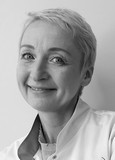Dynamics of homocysteine precursors and methylation index in high-class biathletes at the stages of the preparatory period of the annual cycle
Ключевые слова:
methylation index, S-adenosylmethionine, S-adenosylhomocysteine, biathlon, preparatory period.Аннотация
Objective of the study was to identify the dynamics of S-adenosylmethionine, S-adenosylhomocysteine and methylation index in high-class biathletes at the stages of the preparatory period of the annual cycle.
Methods and structure of the study. Participants in the experiment are athletes of the Russian national biathlon team (n=23). Quantitative analysis of homocysteine precursors in blood samples of study participants was performed on an ultrafast liquid chromatography-mass spectrometer with triple quadrupole LCMS-8060 (Shimadzu, Japan).
Results and conclusions. The features of the dynamics of the concentrations of homocysteine precursors and the methylation index were studied within the preparatory period of the annual cycle of high-class biathletes. At the stages of the preparatory period of different orientation, intensity and specificity of the preparation means used, the frequency of occurrence of cases of a reduced level of the methylation index was revealed: at the general preparatory stage – 14,52%, at the special preparatory stage – 32,26%, at the pre-competition stage – 5,00%. It was established that the decrease in the methylation index during the training period under consideration is due to a shift in the direction of training loads towards high-intensity motor modes.
Библиографические ссылки
Bravo A.C., Aguilera M.N.L., Marziali N.R., et al. Analysis of S-adenosylmethionine and S-sdenosylhomocysteine: method optimisation and profiling in healthy adults upon short-term dietary intervention. Metabolites. 2022;12(5):373.
De Gonzalo-Calvo D., Dávalos A., Fernández-Sanjurjo M., et al. Circulating microRNAs as emerging cardiac biomarkers responsive to acute exercise. Int. J. Cardiol. 2018;264:130–136.
Deminice R., Ribeiro D.F., Frajacomo F.T.T. The effects of acute exercise and exercise training on plasma homocysteine: a meta-analysis. PLoS One. 2016;11(3):e0151653.
Herrmann M., Schorr H., Obeid R., et al. Homocysteine increases during endurance exercise. Clin. Chem. Lab. Med. 2003;41(11):1518–1524.
Iglesias-Gutiérrez E., García-González Á., Montero-Bravo A., et al. Exercise-induced hyperhomocysteinemia is not related to oxidative damage or impaired vascular function in amateur middle-aged runners under controlled nutritional intake. Nutrients. 2021;13(9):3033.
Lind M.V., Lauritzen L., Vestergaard H., et al. One-carbon metabolism markers are associated with cardiometabolic risk factors. Nutr. Metab. Cardiovasc. Dis. 2018;28(4):402–410.
Mrakic-Sposta S., Gussoni M., Vezzoli A., et al. Acute effects of triathlon race on oxidative stress biomarkers. Oxid. Med. Cell. Longev. 2020;2020:3062807.
Schalinske K.L., Smazal A.L. Homocysteine imbalance: a pathological metabolic marker. Adv. Nutr. 2012;3(6):755–762.
Stabler S.P., Allen R.H. Quantification of serum and urinary S-adenosylmethionine and S-adenosylhomocysteine by stable-isotope-dilution liquid chromatography-mass spectrometry. Clin. Chem. 2004;50(2):365–372.
Xiao Y., Su X., Huang W., et al. Role of S-adenosylhomocysteine in cardiovascular disease and its potential epigenetic mechanism. Int. J. Biochem. Cell Biol. 2015;67:158–166.
Zhang Z., Wang L., Zhan Y., et al. Clinical value and expression of Homer 1, homocysteine, S-adenosyl-l-homocysteine, fibroblast growth factors 23 in coronary heart disease. BMC Cardiovasc. Disord. 2022;22(1):215.

Дополнительные файлы
Опубликован
Как цитировать
Выпуск
Раздел
Лицензия

Это произведение доступно по лицензии Creative Commons «Attribution» («Атрибуция») 4.0 Всемирная.
